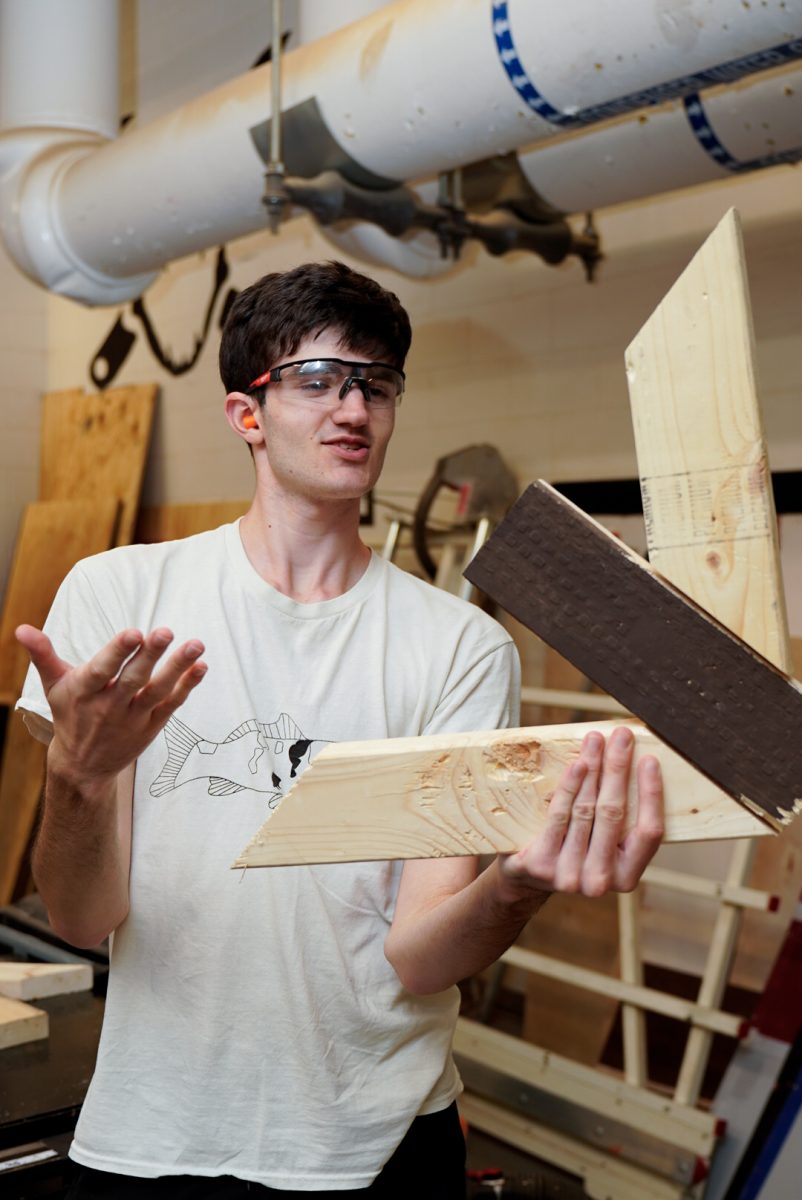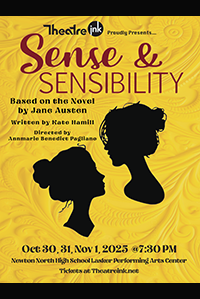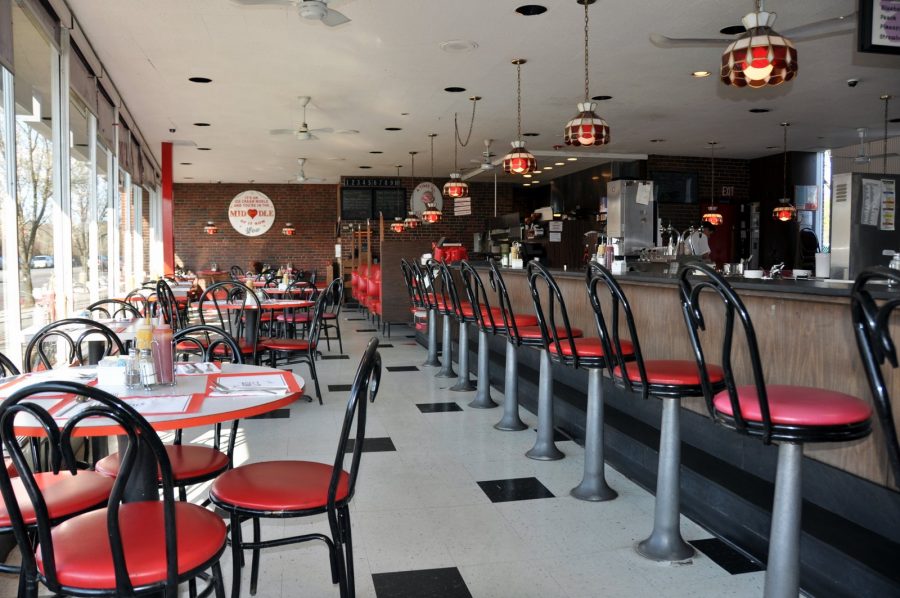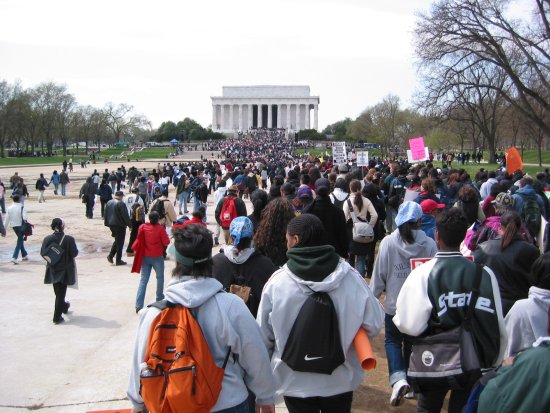After wading through North’s crowded hallways, ducking into the library learning commons (LLC) for a few minutes is often like letting out a long sigh. But for many students at North, the LLC is no longer a place where they feel comfortable.
In North’s library learning commons, students retaliate against the rules set by the librarians, frustrated by their alleged austerity.
The librarians, on the other hand, set these rules in an attempt to create an environment that appeals to students academically and socially.
As in many public libraries, food and drinks other than water are not allowed in the LLC. Students such as sophomore Maya Mathews tend to agree with basic policies such as the food policy. “I understand why that one’s important,” she said.
The food policy, however, may be as far as the understanding between library teachers and students extends.
“I know that they need to have rules and need to regulate them,” said senior Katja Belsley. “But I think that sometimes they take them a little too far.” She went on to describe a situation in which she was asked to leave the library when she was included in a group of loud people, even though she was not part of the group.
According to Mathews, the library teachers are “very inconsistent with their rule-keeping. They are biased from person to person, and if they see you as a troublemaker, then you’ll most likely get kicked out of the library.”
Other students report seemingly unjust encounters with library teachers. Sophomore Jonas Vorbau was asked to leave the library as he was helping his friend with his math homework. “Since I was standing, I was kicked out,” he said.
Referring to the “no-standing” policy in the LLC, a policy that requires students to sit when they enter the library, sophomore Nicolas Quintana said, “I feel like people have the right to stand or to sit down on the ground, it’s a library, it shouldn’t be a problem.”
Library teacher Kate Kennedy said that when setting ground rules, library teachers attempt to be as clear as possible, keeping their rules simple and straightforward. She added that they try to be as consistent as they can in terms of regulating the rules.
One problem identified by students is the inconsistency in student accessibility to the library. For example, if passes are unavailable, some students are unable to access the LLC. “Maybe if they explained it, people wouldn’t be so frustrated, because a lot of times people do need to come to the library to work on stuff,” said Mathews. “When they lose that option, it’s really quite upsetting.”
According to Belsley, although many students are frustrated with the library policies, they often don’t voice their concerns to the library teachers.“If you disagree with the librarians, they can be really rude about it,” she said. “Arguing with them is just a big waste of time because they’re going to get all angry.”
The librarians, however, have a different perception of such a situation.
According to Italiano, “Often the students who choose not to follow the rules and then are reminded of them tend to push back on us the most.”
“If we have to keep going back to a group and reminding them of our rules, then sometimes we do ask them to find someplace else to go,” said Kennedy. “It’s not our goal to do that, but it happens.”
Generally, library teachers encourage students to find a place to sit as they enter the LLC, and to work on something in a way that is productive and respectful to the other people around them, according to Kennedy.
The LLC, said Italiano, is an academic space first and foremost, and in order to fulfill the students’ academic needs, rules such as the “no-standing” policy must be put in place. Italiano added that while the librarians are “sympathetic of the general student frustration,” the rules are relatively basic, designed to maximize student productivity and provide an ideal library experience.
MIT librarian Lisa Horowitz explains that in reality, there is no such thing as an ideal library. “Libraries serve many different purposes, and the best use of library space is to serve its community in the way the community needs,” said MIT librarian Lisa Horowitz.
So what does the North community need?
For the past few years, the librarians have been experimenting with what is known to library users as The Quiet Space.
This area is a large part of the library that has been dedicated to individual silent study. Multiple tables are scattered throughout the area, each seating only three people in an attempt to keep large groups from occupying the area, said Kennedy.
According to Italiano, the Quiet Space, established only about four years ago, was started “based on student requests for an area to have as a quiet study area to be able to really focus and be productive.”
Allowing students to choose whether they want to work silently and individually or collaboratively provides them with more variety in the spaces where they can relax, added Italiano. However, it also provides the opportunity for more dissatisfaction to arise amongst students.
“I think the quiet space should be used for more of a location to study, but by yourself. There should not be tables with more than one person,” said Quintana. “It shouldn’t be a spot where people can just see as an overflow section,” he added.
Similarly, Mathews said that the tables should seat only one person each. If there’s more than one person at a table, she said, they will talk, “because most likely they’re working together.
While some students are not satisfied with the way in which the LLC is set up, many students enjoy the benefits from its division into two sections.
Belsley said, “I like that the library’s divided up into a quiet area where you can work and a more collaborative area. I think it’s fairly well set up in those terms.”
The librarians also agree that the Quiet Space is beneficial to the student body. “Over time, The Quiet Space has become a pretty popular place, if the fact that almost every block it’s full is any indicator,” said Italiano.
Even as the Quiet Space begins to resolve conflict in the library, new tensions arise.
The population of the school continues to grow every year, and the building may soon be facing challenges in exceeding its maximum capacity, according to principal Henry Turner.
“Right now, it is common to see a class going on in every classroom in the school; it’s rare to see an empty classroom,” said Turner. “As we get bigger, we’ll probably start to see even more classrooms being filled.”
The LLC is experiencing a similar crisis, according to Kennedy. “This room [library] is pretty big, but it can’t hold the entire population of the school,” she said. “I also understand that the school building is big, but there are also a ton of people in it.”
While the library has not yet reached its maximum capacity, students still feel the effects of the space’s small area in contrast to the large student body.
According to Turner, “the library has a certain capacity, and so there will be challenges in terms of students not being able to get into the library as a hangout or study space.”
As the library becomes increasingly full, library teachers have identified another problem that seems to be distressing students.
“I think students are frustrated that there are not enough spaces for them to fill all of their needs,” said Italiano. She added that students either want for there to be an area such as a commons or a lounge for them to hang out or for the library to be a place where they can relax.
Simmons College associate professor of Library and Information Science Gerald Benoit said that libraries don’t have to be solely a place to hang out or solely an academic space. “I think the greatest part of the future for libraries is the increasingly open, welcoming, ‘town hall’ feeling of libraries – to be a place for everyone – physically, intellectually, and literally,” he added.
At the moment, according to Belsley, the library does not function as such a space. Unfortunately, neither does any other space, she added.
“There’s really nowhere to sit in this school,” said Belsley. “I mean, there are places in the school where they could just put little sitting areas, and then not everyone would be sitting on the floor in the halls.”
“It’s not too easy to have an environment where you can get work done but also spend time with friends, and I think the fact that students feel like there’s nowhere else in the building to go is probably pretty frustrating to some kids,” said Kennedy.
The SFA has been discussing a potential solution to this problem. Junior Ian Reid, who serves as student co-chair on the SFA, has proposed several bills to the committee that would allow different parts of the building, such as Main Street and the Theater and Tiger Drive entrances to be open for students to hang out.
“It comes down to space in the library and where students are allowed to go and where students feel comfortable being,” said Reid. “The goal is to make other spaces in the building feel as nice as the library as well, so that students won’t have to go down to the library.”
According to Mathews, opening up parts of Main Street hallway to students is a good way to resolve this issue. “There’s an excessive amount of floor there,” she said, adding that tables and chairs could be placed so that students could relax in the area.
Nevertheless, according to Turner there is no need to take these measures. “There’s ample space in the cafeteria for students,” he said. “The cafeteria is a huge space.”
The cafeteria, however, may not be enough to fulfill student needs, according to Kennedy.
“I try to think about it from a student’s point of view, and having another space where people could go would be great. Whether you have a lot of frees or if you just want to play games with your friends, it would be nice to have a place to go,” she said.
Categories:
Tensions rise between students, librarians over library policies
April 26, 2017
0
Donate to The Newtonite
More to Discover









































